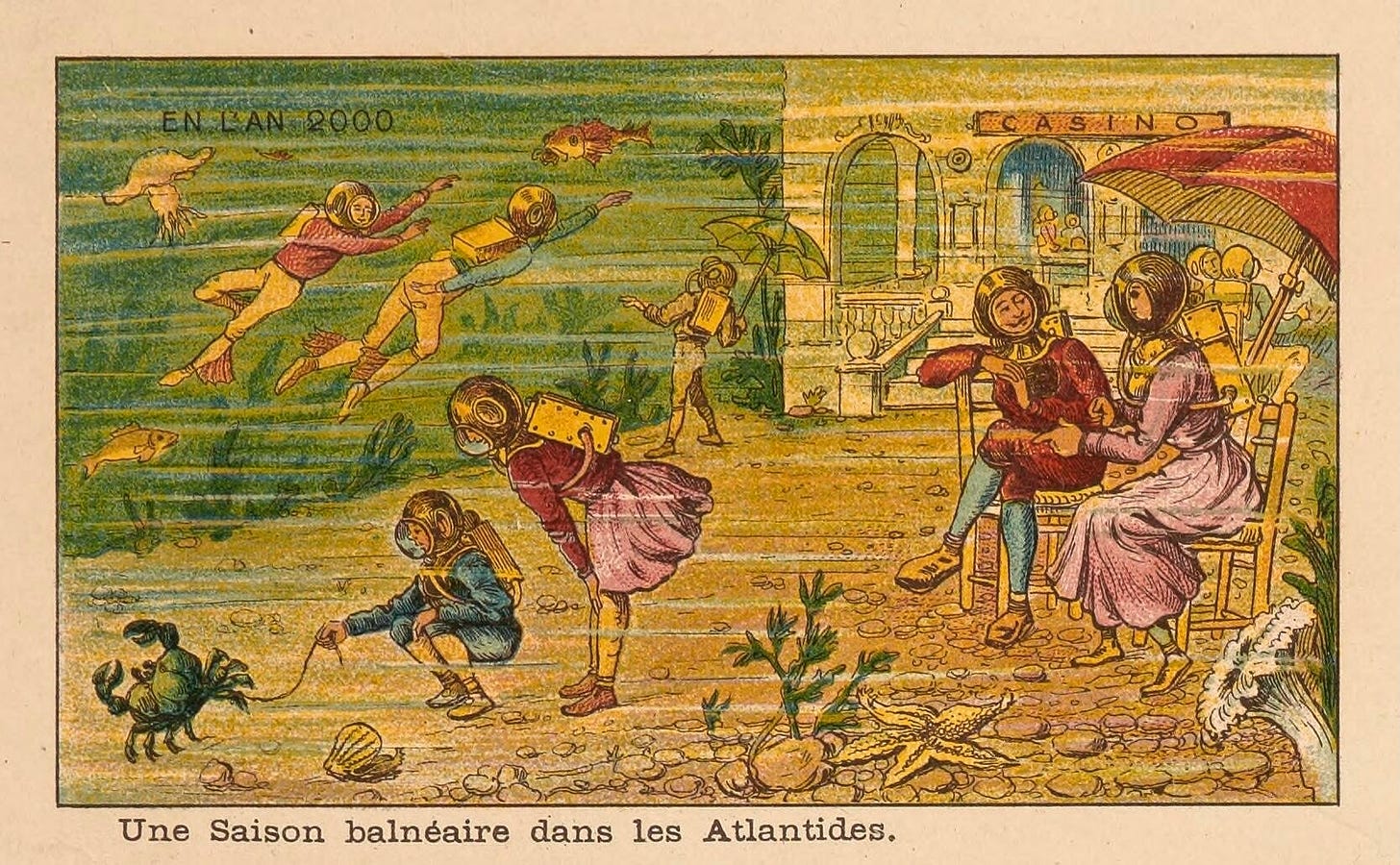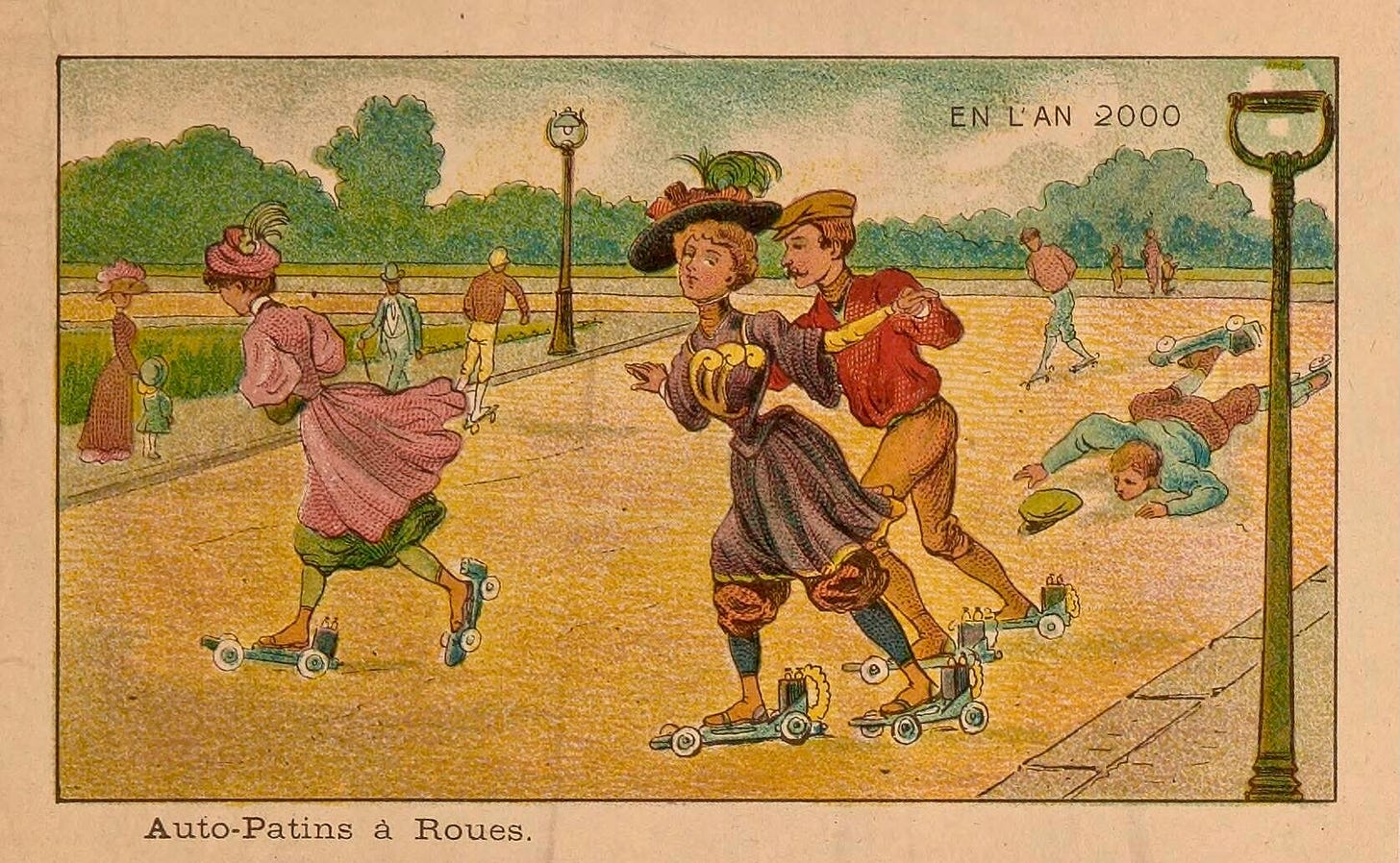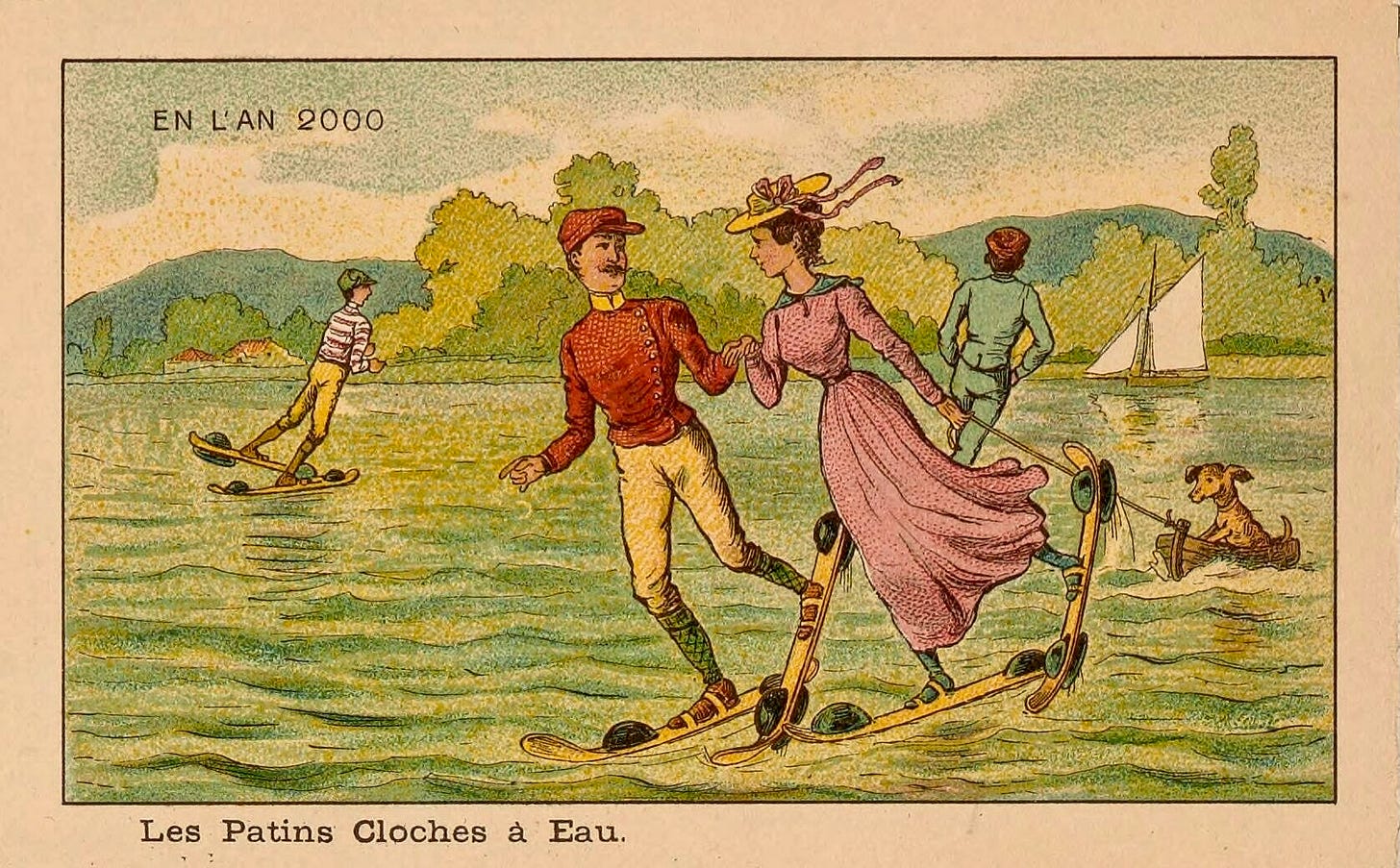At the turn of the 20th century, a collection of whimsical and imaginative illustrations emerged from France, capturing bold predictions for the year 2000.
These illustrations, known as "En L'An 2000," were created to celebrate the dawn of a new century, offering a fantastical glimpse into a future shaped by technological advancements and human ingenuity.
Commissioned by the French industrialist Armand Gervais for the 1900 World Exhibition in Paris, these illustrations were initially printed on cigarette cards, cigar boxes, and postcards.
The excitement and optimism of this era were palpable, and artists and writers often speculated about what the future might hold.
The “In the Year 2000” illustrations reflect this zeitgeist, showcasing the technological wonders and societal changes the future would hold.
Aviation: In 1900, human flight was still a dream. Pioneers had conducted gliding experiments, but controlled, powered flight had not yet been achieved.
The Wright brothers’ first flight was three years away - these depictions of common air travel and personal flying machines were a bold leap of imagination.
Undersea Exploration: In 1870, Jules Verne’s novel “Twenty Thousand Leagues Under the Sea” captivated imaginations with its depiction of the submarine Nautilus.
By 1900 inventors had only just begun developing practical submarines and underwater colonies have yet to become a reality.
Mechanized Production and Automation: The concept of assembly lines, popularized by Henry Ford in 1913, was yet to come, and automation in the sense of fully autonomous machines was still a distant dream.
Curiously, the illustrations blend contemporary 19th-century fashion with speculative futuristic elements. Men and women are often shown in Victorian attire paired with “steampunk” gadgets, reflecting a mix of tradition and imagined future functionality.
The “En L’An 2000” illustrations showcase a belief in human ingenuity and the potential for machines to enhance every aspect of life, from travel and communication to domestic chores and education.
Yet one illustration predicted the future of war.
Just over a decade later, World War I witnessed the first large-scale use of tanks, machine guns, chemical warfare, submarines, and airplanes for combat.
These innovations brought unprecedented destruction, a stark contrast to the whimsical visions of aerial tennis.
Sources for all images - and many more: The Public Domain Review





















Brilliant.
This is so great! It’s like Richard Scarry meets Wes Anderson and I mean that in the best way.